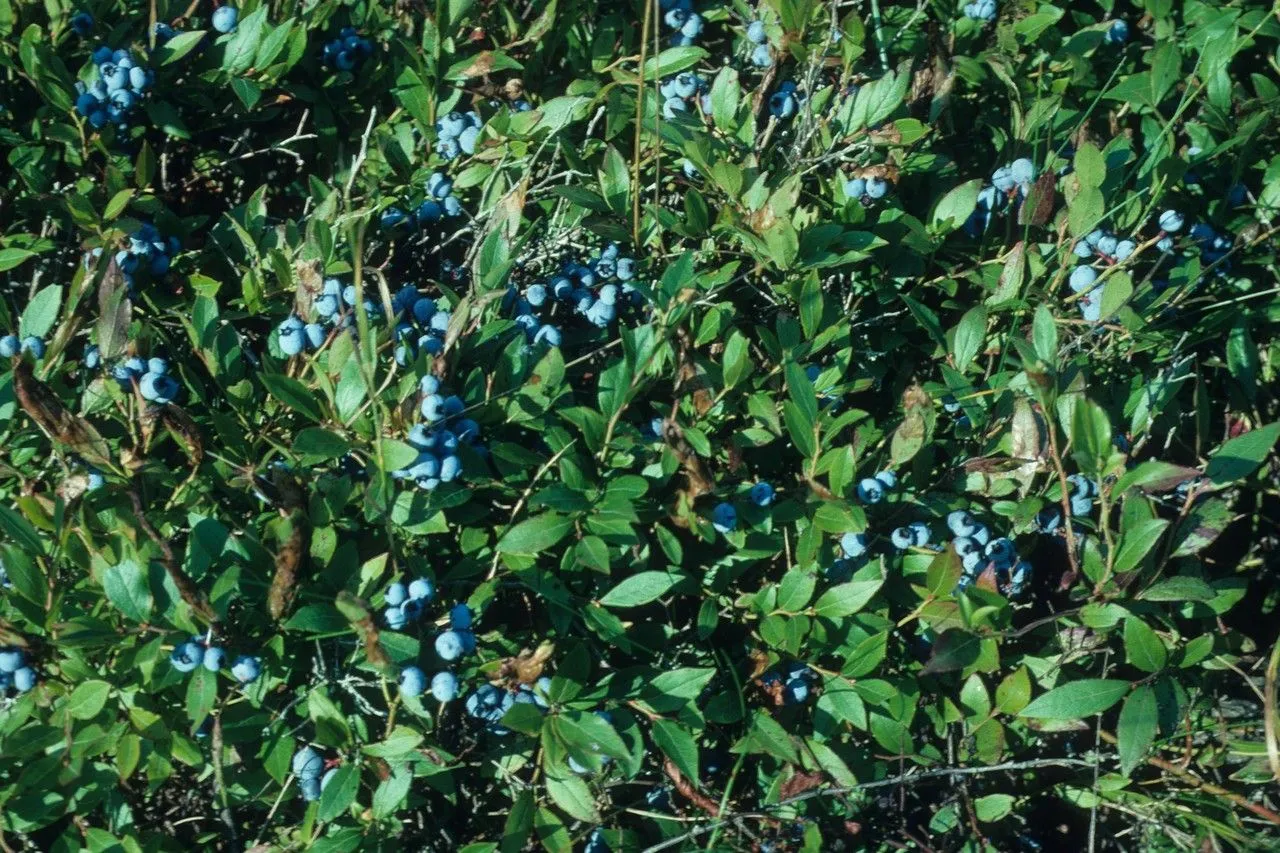
Author: Aiton
Bibliography: Hort. Kew. 2: 11 (1789)
Year: 1789
Status: accepted
Rank: species
Genus: Vaccinium
Vegetable: False
Observations: C. & E. Canada to NC. & E. U.S.A.
The Early Lowbush Blueberry, scientifically known as Vaccinium angustifolium, is a versatile and hardy member of the Ericaceae family. This plant is native to North America, specifically thriving in regions extending from Central and Eastern Canada down to North Carolina and even parts of the Eastern United States.
This deciduous shrub is renowned for its small stature, typically growing between six inches and two feet tall, which lends it the “lowbush” nomenclature. Despite its modest height, the Early Lowbush Blueberry is a prolific producer of sweet, aromatic berries that are a favorite among foragers and wildlife alike. The berries themselves are small, typically around a quarter inch in diameter, and ripen to a rich blue color.
One of the distinctive features of Vaccinium angustifolium is its adaptability to a wide range of soil types, although it prefers acidic conditions commonly found in the wild terrains of its native regions. The plant exhibits excellent cold tolerance, making it suitable for cultivation in colder climates where other fruit-bearing plants might struggle.
Aside from its value as a fruit-bearing plant, the Early Lowbush Blueberry is also celebrated for its ecological benefits. It serves as a critical food source for various wildlife, including bears, birds, and other small mammals. Its blossoms, which appear in late spring, are highly attractive to bees and other pollinators, thereby supporting local ecosystems.
In addition to its ecological importance, Vaccinium angustifolium holds significant cultural and economic value. Indigenous peoples have long harvested these berries, incorporating them into a variety of traditional dishes. Today, the berries are still widely collected both commercially and for personal use, often featured in jams, jellies, and baked goods.
Overall, the Early Lowbush Blueberry is a resilient and valuable plant that plays a key role in both natural and human environments. Its ability to thrive in harsh conditions, coupled with its ecological and economic contributions, underscores its importance across its native range.
Eng: blueberry, early lowbush blueberry, late sweet blueberry, low sweet blueberry, lowbush blueberry, sweet lowbush blueberry, sweethurts, upland lowbush blueberry
Fra: bleuet à feuilles étroites, airelle de pennsylvanie, airelle à feuilles étroites, bleuet, bleuet feuille-dentelée, bleuet nain, bleuets
En: Early lowbush blueberry, Low sweet blueberry, Lowbush blueberry, Late sweet blueberry, Blueberry, Sweethurts, Upland lowbush blueberry, Late Lowbush Blueberry, Sweet lowbush blueberry
Ar: عنبية ضيقة الورق
Zh: 矮叢藍莓
Et: Ahtalehine mustikas
Fi: Kanadanmustikka
Fr: Bleuet à feuilles étroites, Airelle de Pennsylvanie, Airelle à feuilles étroites, Bleuet, Bleuet feuille-dentelée, Bleuet nain, Bleuets
Vi: Việt quất bụi thấp
Taken Jan 1, 1900 by EOL − Superior National Forest (cc-by)
Taken Jun 9, 2020 by Laura Doucet (cc-by-sa)
Taken Apr 23, 2022 by Sharon Byler (cc-by-sa)
Taken Jul 24, 2021 by gypsy.hiker (cc-by-sa)
Taken Jan 1, 1900 by EOL − Encyclopedia of Life (gpl)
Taken Jul 10, 2021 by DeathfireD (cc-by-sa)
Taken Aug 20, 2019 by k lindquist (cc-by-sa)
Taken Oct 16, 2022 by Tiffany Belesky (cc-by-sa)
Taken Jul 26, 2020 by Vera F (cc-by-sa)
Taken Aug 28, 2021 by Hollie Belcourt (cc-by-sa)
Taken Sep 21, 2020 by St-Pierre Rémi (cc-by-sa)
Taken Aug 22, 2020 by Evan Duquette (cc-by-sa)
Taken Jul 26, 2021 by Don Churchill (cc-by-sa)
Taken Jul 24, 2021 by gypsy.hiker (cc-by-sa)
Taken Jul 24, 2021 by gypsy.hiker (cc-by-sa)
Taken May 19, 2013 by EOL − Kent McFarland (cc-by-nc)
Taken Jul 26, 2013 by EOL − Bob Heitzman (cc-by-nc)
Taken Jul 9, 2013 by EOL − karlystrukamp (cc-by-nc)
Taken Jan 1, 1900 by EOL − Howard, R.A. (cc-by-nc-sa)
Taken Jan 1, 1900 by EOL − Caleb Slemmons (cc-by)
Taken May 20, 2020 by Aaron Harp (cc-by-sa)
Taken May 13, 2020 by Zachary M (cc-by-sa)
Taken May 27, 2020 by Beth Holley (cc-by-sa)
Taken Jun 10, 2021 by Leo (cc-by-sa)
Taken Jul 13, 2022 by Sally Sutton (cc-by-sa)
Taken Jun 12, 2019 by Gregg Ring (cc-by-sa)
Taken Jan 1, 1900 by EOL − John Hilty (cc-by-nc)
Growth form: Multiple Stem
Growth habit: Subshrub, Shrub
Growth rate: Moderate
Ph maximum: 7.5
Ph minimum: 4.7
Family: Myrtaceae Author: (F.Muell.) K.D.Hill & L.A.S.Johnson Bibliography: Telopea 6: 402 (1995) Year: 1995 Status:…
Family: Rubiaceae Author: Pierre ex A.Froehner Bibliography: Notizbl. Bot. Gart. Berlin-Dahlem 1: 237 (1897) Year:…
Family: Sapindaceae Author: Koidz. Bibliography: J. Coll. Sci. Imp. Univ. Tokyo 32(1): 38 (1911) Year:…
Family: Asteraceae Author: A.Gray Bibliography: Pacif. Railr. Rep.: 107 (1857) Year: 1857 Status: accepted Rank:…
Family: Fabaceae Author: Medik. Bibliography: Vorles. Churpfälz. Phys.-Ökon. Ges. 2: 398 (1787) Year: 1787 Status:…
Family: Aspleniaceae Author: (Cav.) Alston Bibliography: Bull. Misc. Inform. Kew 1932: 309 (1932) Year: 1932…